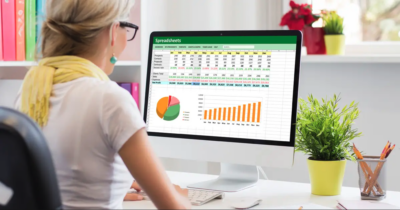In QuickBooks, you can create classes that you assign to transactions. This lets you track income and expenses by department, business office or location, separate properties you own, or any other meaningful breakdown of your business.
For example, if you had a restaurant with three locations, you might create an Uptown, a Midtown, and a Downtown class for tracking income and expenses by location. A farmer might create a class for each enterprise—for example, Corn, Hogs, and Soybeans. At the end of an accounting period, the restaurant could create separate reports for each location. Likewise, the farmer could create separate reports for each enterprise.
Class tracking reports
The Profit & Loss by Class report shows the profit and loss of each aspect of your business that you are tracking by class in QuickBooks.
The Profit & Loss Unclassified report shows the profit and loss from all transactions that are not classified. You can use this report to identifying unclassified transactions in your company file.
When using Class tracking, please consider the following tips:
- Set up classes on the basis of the type of reporting that you want to do, and consider how you want to see your business segmented on reports.
- Set up a class such as “other” that you can use to deliberately classify transactions that don’t fit into any specific class that you’ve defined.
- Don’t use classes for two different purposes. (i.e. Don’t create classes for tracking office locations in addition to tracking partners).
- Identify both income and expenses for each class you set up.
- Consistently enter the class information on your forms and registers to ensure that this information is valid and useful.
Differentiating between “Class” and “Type”
Use a “class” to classify transactions. Classes can apply to all transactions, so they are not tied to any particular customer.
Use a “type” to classify customers, jobs, and vendors. (Note: Jobs are available only in QuickBooks Pro, Premier, and Enterprise editions.
For example, you might have “wholesale” and “retail” customer types. You can then get financial reports focused by type of customer. But maybe you need a third classification that spans any type of customer. In this case, you can use QuickBooks classes. For example, if you have separate departments, you can create a class for each department, such as “children’s” and “women’s.” Or if you have two stores, you can set up a class for each store.
Each time you enter a sale in QuickBooks, enter the class associated with that sale. Then you can get reports on income and expenses by class regardless of which types of customers are involved.
Summary
If you are considering using Classes in Quickbooks, let Keystone Financial Consultants know. Not only can we provide you some ideas of Classes to use based on your industry, we can help you set them up. We are Certified Quickbooks ProAdvisors who have had hours upon hours of Quickbooks training and real world use.




